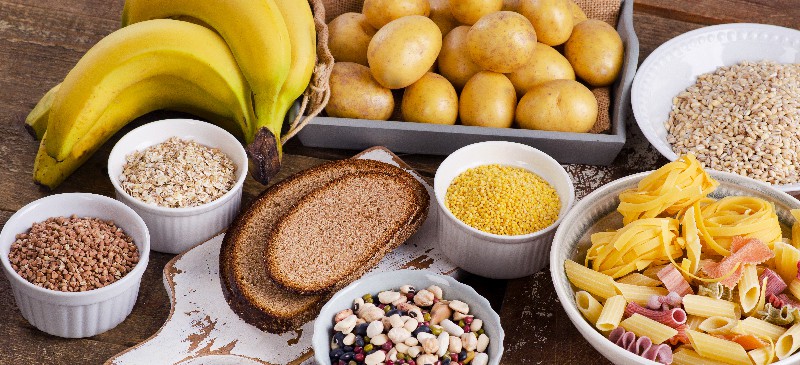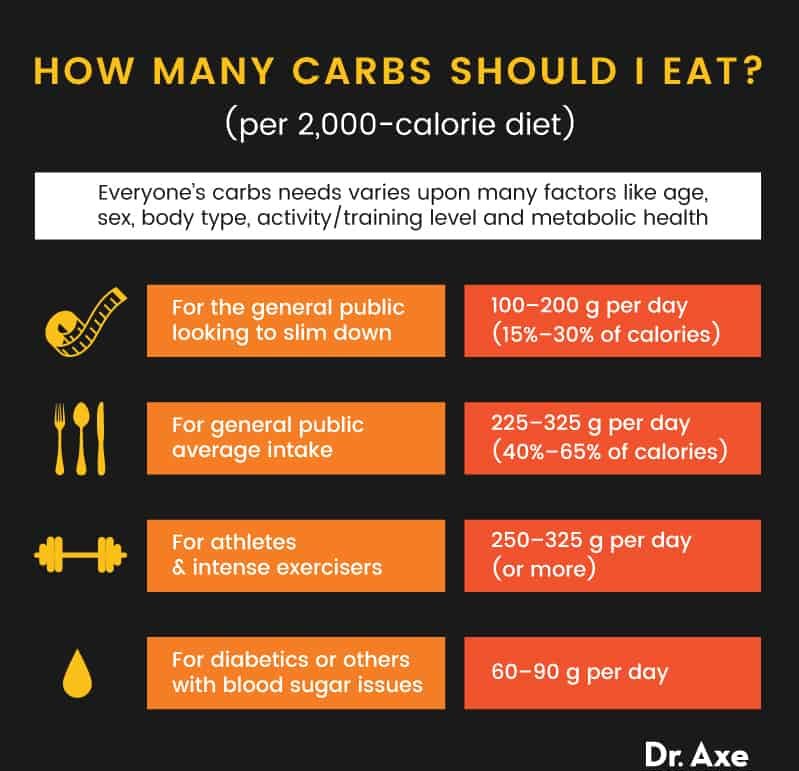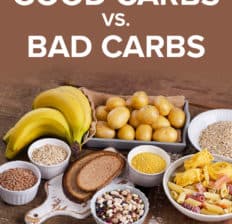This Dr. Axe content is medically reviewed or fact checked to ensure factually accurate information.
With strict editorial sourcing guidelines, we only link to academic research institutions, reputable media sites and, when research is available, medically peer-reviewed studies. Note that the numbers in parentheses (1, 2, etc.) are clickable links to these studies.
The information in our articles is NOT intended to replace a one-on-one relationship with a qualified health care professional and is not intended as medical advice.
This article is based on scientific evidence, written by experts and fact checked by our trained editorial staff. Note that the numbers in parentheses (1, 2, etc.) are clickable links to medically peer-reviewed studies.
Our team includes licensed nutritionists and dietitians, certified health education specialists, as well as certified strength and conditioning specialists, personal trainers and corrective exercise specialists. Our team aims to be not only thorough with its research, but also objective and unbiased.
The information in our articles is NOT intended to replace a one-on-one relationship with a qualified health care professional and is not intended as medical advice.
Good Carbs vs. Bad Carbs: The Healthy Carbs You Want to Eat
March 24, 2023

Carbohydrates are a hot topic in the nutrition world — particularly when it comes to discerning between good carbs and bad carbs. In one arena, we hear how wonderful carbohydrates are for exercise performance and metabolism, and then the next day we hear about a recent study showcasing the potential damaging blood sugar effects of carbohydrate consumption.
This constant back and forth leaves the general public dazed and confused on whether carbs are good or bad for our health. The truth is, like with most foods, there are good carbs and unhealthy carbs.
How is one to tell the difference? It can be a bit confusing.
With the rise in certain diets, such as the low-carbohydrate diet, no-carb diet or high-fat keto diet, this adds to the bombardment and confusion surrounding carbohydrates. It’s no wonder so many of us aren’t quite sure which direction to go.
Should we avoid carbohydrates or eat them? Should we be counting them?
This article will explore the science of carbohydrates and what they do for the body — as well as dispel some of the common myths surrounding this infamous macronutrient and how to discern good carbs from bad ones.
What Are Carbohydrates?
What exactly is a carbohydrate? A carbohydrate is a molecule that consists of carbon hydrogen and oxygen atoms that is usually of a hydrogen-oxygen atom ratio of 2:1.
Carbs are one of the three macronutrients, along with protein and fat, that we need in varying amounts to meet and sustain our metabolisms and energy levels. When we consume carbohydrates, our digestive tracts convert them into glucose. This glucose is then burned to produce heat and adenosine triphosphate (ATP).
ATP is a molecule that stores and releases energy as needed by the cells in our body.
Carbohydrates comprise three categories:
- Sugars: The first are sugars, which are sweet, small-chain carbohydrates. Some prime examples of sugars are glucose, sucrose, galactose and fructose.
- Long-chain glucose: The second type of carbohydrate are composed of long-chain glucose molecules, which get broken down into glucose in the digestive tract.
- Fiber: The last type of carbohydrate is fiber, which we do not have the capacity to break down. However, our gut bacteria has the capacity to extract some of that fiber as fuel and convert it into short chain fatty acids. High-fiber foods are also great sources of prebiotics, which serve many functions in the body — like providing fuel for our gut bacteria. Research published in Frontiers in Behavioral Neuroscience suggests that dietary prebiotics can improve non-REM and REM sleep after a stressful event — one benefit of good carbs that provide fiber.
How exactly does glucose get converted into energy? Glucose gets converted into energy with or without oxygen.
It gets transformed into energy with oxygen in the cell organelle called mitochondria. The byproduct of this process involves ATP, heat and carbon dioxide.
Our bodies use the glucose as a fuel source for the cells in the body, tissues and organs. Any excess sugar gets stored in the liver and muscle tissues as glycogen, where it can be accessed at a later time. When the glucose gets transferred into energy without the presence of oxygen, the end result is lactic acid, which causes muscle soreness.
Good Carbs vs. Bad Carbs
How do we tell the difference between good carbs and bad carbs? It’s important that we understand the type of carbs we eat because the type dictates how the carbs respond in the body.
Whole, unprocessed carbs are considered healthy carbs. Some examples include sweet potatoes, bananas, potatoes, brown rice, yucca, legumes and dates. All these foods have their nutrients intact and have been minimally altered to impact the nutritional value of the food.
Refined carbs are carbohydrates without the fiber content present. They have been altered in such a way that the processing methods strips the food of the many key vitamins, minerals and fatty acids.
Examples of refined carbs include fruit drinks, white flour, white rice, white pasta and pastries. Healthy carbs impact insulin levels in the body much differently than refined, processed carbs do.
A 2013 study published in the American Journal of Epidemiology looked at the effects of refined carbs on coronary heart disease. These researchers found that intake of bad carbs led to an increased risk of cardiovascular disease and obesity.
Processed carbs lead to a constant blood sugar fluctuation throughout the day, thus impacting overall human performance and longevity.
Researchers from the American Heart Association examined the harmful effects of high glycemic index and high glycemic load foods like processed carbs. The intake of bad carbs correlated with impaired glucose intolerance, greater insulin concentrations circulating throughout the bloodstream, and an overall increased risk for type 2 diabetes.
Best Good Carbs
- Sweet potatoes
- Bananas
- Potatoes
- Brown rice
- Yucca
- Legumes
- Dates
- Buckwheat
- Quinoa
Not all carbohydrates are considered “bad.” Healthy carbohydrates, which are high in sugar and starch, do exhibit vastly different effects on the body than refined carbs do.
For example, purple sweet potatoes are high in various complex sugar molecules, unrefined starches, vitamins, trace minerals and phytochemicals, like anthocyanins.
A study from Kansas State University examined the effects of purple sweet potato intake on one’s health. Researchers found that purple sweet potatoes contain derivatives from anthocyanins called cyandinin and peonidin. These specific compounds show vast improvements in slowing cancerous cell growth proliferation and boosting overall metabolic function and cardiovascular health.
Some other highly regarded carbs include bananas, dates and buckwheat. These particular foods are high in carbohydrates and fiber, as well as chock-full of vitamins, trace minerals, antioxidants and essential fatty acids.
Buckwheat contains roughly 71.5 grams of carbohydrates, 16 grams of fiber and 23 grams of protein in a 100-gram serving. That is quite the impressive nutritional profile.
More interesting is that buckwheat ranks medium low on the glycemic index. The glycemic index pertains to how our blood sugar rises after two hours of food consumption. The higher the number on the glycemic chart, the greater the rise in your blood sugar levels.
Foods that break down more quickly elicit a larger increase in blood glucose levels in the bloodstream than carbs that break down at a slower rate.
Buckwheat is also rich in resistant starch. Resistant starch is a specific type of starch that resists digestion, thus making it fall under the category of fiber.
It passes into the colon, where it is broken down by our gut bacteria. These nourishing bacteria create these short-chain fatty acids, such as butyrate, which boost colon health by providing fuel for the cells lining the colon.
Another well-known compound that buckwheat exhibits is called rutin, which is one of the main antioxidants present in buckwheat. Research published in Food Research International found that rutin displays protective lipid peroxidation benefits. Lipid peroxidation means the degradation of lipids, or the oxidation of lipids resulting in cellular damage.
Dates are also some of the best good carbs on the planet, especially Medjool dates. They are quite high in glucose, fructose and sucrose and rich in minerals like manganese, potassium, phosphorus, copper, magnesium and selenium. All of these minerals play a role in many functions in the body, like supporting cardiovascular health, intestinal health and nervous system health.
Dates are rich in amino acids, soluble fiber and insoluble fiber. These proteins and fibers stimulate the digestive tract to influence a healthy and robust microbiome.
A really fascinating study out of the University of Scranton explored the polyphenol content of dates. The researchers found that dates had the highest antioxidant capacity of any dried fruit.
Many researchers suggest that antioxidants play a major role in lowering the mortality rates of cancer and other chronic disease.

How Many Good Carbs Should I Eat?
One of the biggest questions surrounding carbohydrates is: How many grams of carbs per day do you need?
To start, I want to emphasize that everyone’s carbs needs varies upon many factors like age, sex, body type, activity/training level and metabolic health. For the general public looking to slim down, a range of 100–150 grams of good carbs is ideal for most to support energy levels and overall vitality. This comes out to be roughly 15 percent to 30 percent of one’s total calories coming from healthy carbs.
The Dietary Guidelines for Americans suggests 45 percent to 65 percent of total daily calories should come from carbohydrates.
The few exceptions would be individuals who are athletes or fitness enthusiasts who are training intensely. They tend to require more carbs to assist in recovery, muscle protein synthesis and hormone support. These individuals would require 150–250 grams of carbs per day.
On the other spectrum, individuals who have metabolic issues like type 2 diabetes or Alzheimer’s tend to gravitate toward a low-carb foods approach, which proves very effective in addressing diabetes and other neurological diseases. They should consume a between 60–90 carbs per day.
There are even some individuals who are carbohydrate-intolerant. This essentially means that the person lacks certain digestive enzymes, like lactase, amylase, maltase, sucrase and isomaltase, to break down and assimilate carbohydrates effectively.
Another quite common approach to quality and quantity of carb consumption that many adopt is taking a cyclical carb consumption approach. The idea behind carb cycling is centered around consuming more good carbs on specific days of the week and then on other days dialing back on the good, unprocessed carbs.
Some experts in the nutritional science field suggest that this cyclical carb food approach can assist in accelerating weight loss quicker. Some other interesting benefits to carb cycling include maintenance of lean muscle mass, assisting in exercise recovery, balancing out metabolism and hormone support.

Good Carb Recipes
Looking for some recipes that call for good carbs? Here are some that incorporate healthy carbs:
- Banana Egg Paleo Pancakes Recipe
- Brown Rice Salad Recipe
- Turkey Bacon Wrapped Dates with a Balsamic Maple Glaze
You can also try any of my favorite sweet potato recipes and some of the best quinoa recipes around.
Risks and Side Effects
A key concept to be aware of is that less good carbs doesn’t always translate to better health and performance.
Did you know that going too low-carb and/or choosing poor sources of carbs can negatively impact mood, cognitive performance, aging, hormone imbalance, sleep quality and recovery from exercise?
In fact, some studies suggest that cutting carbs too low could negatively impact thyroid function by suppressing T3 function. When T3 gets too low, this can lead to unnecessary weight gain, fatigue, brain fog and low mood.
Final Thoughts
- It’s important to understand that we all respond differently to carbohydrate consumption. First and foremost is starting with healthy, complex carbs and then assessing what you feel is the right amount that suits your own unique genetic makeup.
- At the end of the day, carbs can be quite nourishing and beneficial for our health and performance. It’s all about emphasizing a mindset around quality of the carbs over quantity that will ultimately make the difference for you.
- You want to stick to good carbs, including buckwheat, purple sweet potatoes, quinoa, dates, bananas and more, while avoiding processed, unhealthy, refined carbs, like fruit drinks, white rice and white flour.













